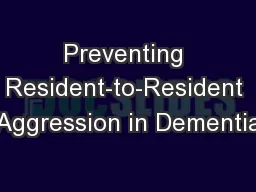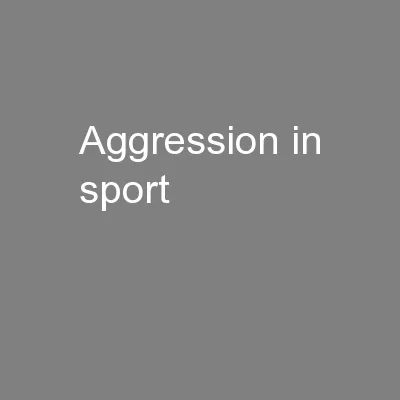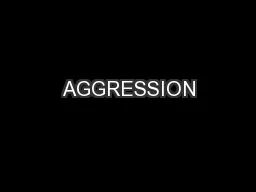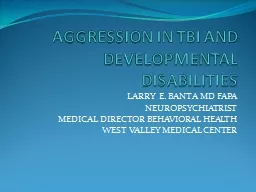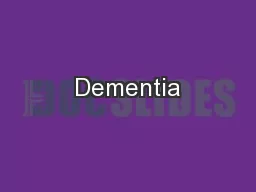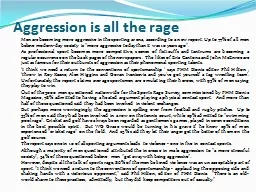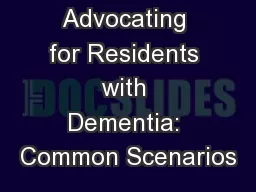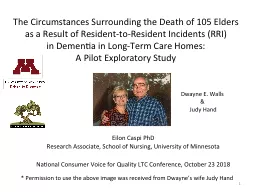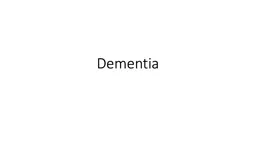PPT-Preventing Resident-to-Resident Aggression in Dementia
Author : mitsue-stanley | Published Date : 2017-08-11
Eilon Caspi PhD Geriatrics amp Extended Care Data amp Analyses Center Providence VAMC Annual NICE Knowledge Exchange Toronto May 21 2014 Dwayne E Wall Sponsored
Presentation Embed Code
Download Presentation
Download Presentation The PPT/PDF document "Preventing Resident-to-Resident Aggressi..." is the property of its rightful owner. Permission is granted to download and print the materials on this website for personal, non-commercial use only, and to display it on your personal computer provided you do not modify the materials and that you retain all copyright notices contained in the materials. By downloading content from our website, you accept the terms of this agreement.
Preventing Resident-to-Resident Aggression in Dementia: Transcript
Download Rules Of Document
"Preventing Resident-to-Resident Aggression in Dementia"The content belongs to its owner. You may download and print it for personal use, without modification, and keep all copyright notices. By downloading, you agree to these terms.
Related Documents

